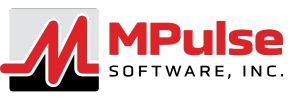Keeping up with work orders can be a challenge, no matter what industry you’re in. Whether you manage building repairs, factory equipment, or service requests, having the right work order software can make a huge difference. It helps track tasks, schedule maintenance, and improve efficiency. But with so many options, how do you choose the best one?
This guide will walk you through the key features to look for and how to find the right software for your industry.
What Is Work Order Software?
Work order software is a tool that helps businesses organize and manage maintenance or service requests. It tracks job details like who is responsible, what needs to be done, and when it’s due. Instead of using paper forms or spreadsheets, companies can use this software to stay organized, reduce delays, and keep operations running smoothly.
Why Do You Need Work Order Software?
Without a good system in place, work orders can get lost, take too long to complete, or cost more than they should. Work order software helps by:
- Keeping all work orders in one place
- Sending automatic reminders for deadlines
- Tracking maintenance history and costs
- Improving communication between teams
- Reducing equipment breakdowns and downtime.
Now, let’s explore how to find the best software for your needs.
Step 1: Identify Your Industry’s Needs
Different industries have different challenges. The best work order software for a hospital won’t be the same as the best one for a manufacturing plant. Here’s what to consider based on your industry:
- Manufacturing: Look for software that tracks machine maintenance, schedules repairs, and manages spare parts. Preventive maintenance features are a must.
- Facility Management: Choose software that helps schedule cleaning, repairs, and inspections for buildings, HVAC systems, and security systems.
- Healthcare: Hospitals and clinics need software that ensures medical equipment is properly maintained and meets safety regulations.
- Construction: Work order software for construction should include job site task tracking, material requests, and contractor scheduling.
- Hospitality: Hotels and resorts need software that handles guest room repairs, housekeeping requests, and routine inspections.
By knowing your industry’s specific needs, you can narrow down your choices.
Step 2: Look for Key Features
The best work order software should have features that make managing tasks easier. Here are some important ones to look for:
- User-Friendly Interface: It should be easy for your team to use without long training sessions.
- Mobile Access: Workers should be able to access work orders on their phones or tablets, especially if they work in the field.
- Automation: The software should automatically assign tasks, send alerts for overdue work, and generate reports.
- Customizable Workflows: Different jobs require different processes. Look for software that lets you customize work orders to fit your needs.
- Reporting & Analytics: Good reporting tools help track costs, efficiency, and equipment performance.
- Integration with Other Systems: If you already use accounting or inventory management software, make sure your work order system can connect with it.
Step 3: Consider Cloud-Based vs. On-Premise Software
There are two main types of work order software:
- Cloud-Based Software: This type is accessed through the internet. It’s great for companies that need flexibility, mobile access, and automatic updates.
- On-Premise Software: This type is installed on company computers. It offers more control over security and customization but requires more IT support.
For most businesses, cloud-based software is the best option because it allows teams to access work orders from anywhere.
Step 4: Compare Pricing and Scalability
Work order software comes at different price points. Some have a monthly subscription fee, while others charge a one-time payment. Here are some things to think about:
- Budget: Make sure the software fits your financial plan.
- Scalability: If your company grows, will the software grow with you? Look for options that allow you to add more users and features over time.
- Free Trials and Demos: Many software providers offer free trials. Test the system before committing to see if it meets your needs.
Step 5: Read Reviews and Ask for Recommendations
One of the best ways to find the right software is to read reviews from other businesses in your industry. Look for feedback on ease of use, customer support, and reliability. You can also ask colleagues or industry groups for recommendations.
Step 6: Train Your Team and Monitor Performance
Once you choose the right software, it’s important to train your team on how to use it. Offer training sessions and create simple guides to help employees understand the system.
After implementation, track key metrics like:
- How long it takes to complete work orders
- Equipment downtime before and after using the software
- Cost savings from improved efficiency.
Adjust settings or workflows as needed to get the most out of your software.
Take the Time to Choose the Right Work Order Software
Choosing the right work order software takes time, but it’s worth the effort. The right system will help your business stay organized, improve maintenance tracking, and save money. Start by understanding your industry’s needs, comparing features, and testing different options before making a final decision.
With the right software in place, managing work orders will be easier than ever. Get started today! Contact us.


